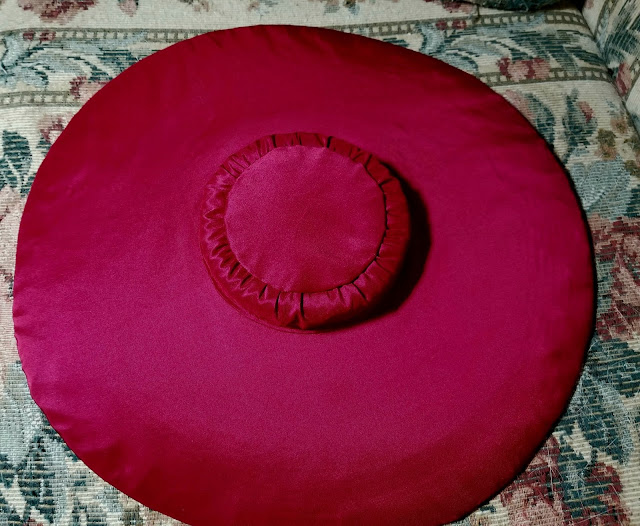Quick post about my most recent millinery project:
I was inspired by this example in the V&A which dates to ca. 1770:
As it turns out, Silk Baron had one of their remnant sales where you can buy pieces in 1/2 yard and 3/4 yard pieces. I ordered a 3/4 yard piece of this lovely garnet silk to cover the hat, make breast knots and other small items.
I used the method outlined in the tutorial in this post to cover a straw hat blank with silk--using garnet silk on the outside and white on the underside. This style of silk covering is copied from several extant examples as shown in the post. This post also shows how to attach the ties underneath.
I could not find French Val galloon lace--galloon lace is lace with 2 scalloped edges--so I bought 1 1/4 inch wide insertion and stitched 5/8 inch edging to both long edges to get what I wanted
I used the method outlined in this post to attach the lace to the brim.
As far as the loops go--I just played with it to figure out the size loops I wanted and stitched then down as "open" loops--you can sort of see that in the photo. I did two rounds of these loops, staggering them and then added more layers to the one side I used 2 inch wide double face satin silk ribbon. 1 1/2 inch double face silk ribbon was attached to the underside for ties.
That's pretty much it.
I'm very pleased with the way this one turned out. You don't see many hats with lace during that time period. I've always loved this one though and thought it would be a great addition to my upper class impressions and to hang in the shop for my milliner impression. Plus--making hats is one of my favorite things to do. Switching up one's accessories can change the entire look of a gown!
Also--as far as period images go--I see more silk covered hats than straw. Even lower sorts have some simple silk covered hats--often showing signs of wear.
Covering the typical hat blank can be done with 1/2 yard of silk taffeta and it's a great way to use up those odd remnants.




No comments:
Post a Comment